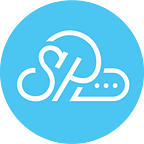Salesforce Sandbox Types, what does the platform offer you?
Having functional, friendly and safe test environments is indispensable in any industry. You can be an administrator who needs to configure different options and add new functionalities to an organization or a work team that needs to be trained, or someone who is learning to work with the software and needs an environment to practice in, or a development team that is attending to the emergence of new requirements or customizations. In any case, you need an independent work environment. In Salesforce these environments are known as sandboxes.
What is a Salesforce sandbox and what is it used for?
A sandbox is a copy of your production org, completely isolated. By being created as independent instances, the different types of sandbox can be used for a wide variety of purposes such as training, testing or development all, without running the risk of affecting your production environment. Depending on the Salesforce edition you have, the number of the different types of sandbox available at your disposal will vary.
A copy of your organization in a separate environment can be used for multiple purposes:
- As development, testing and staging environments.
- For testing new Salesforce releases.
- To carry out user training.
- To develop or test new functionalities that, once ready, will be applied in production.
What are the different types of sandboxes that Salesforce offers?
Salesforce.com offers four types of sandboxes, the availability of which varies depending on the Salesforce edition:
Developer Sandbox
Designed for developers, it guarantees an isolated environment for development and testing. It includes a copy of your production org’s configuration metadata and can be updated once a day. It can be considered a very basic type of sandbox and is available in all Salesforce editions, and you have 200 MB of storage for both files and data.
Developer Pro Sandbox
Not included by default in all Salesforce editions and with 1GB storage availability. In essence, this sandbox is very similar to the previous one. The advantage of the large storage capacity is that the Developer Pro Sandbox allows you to handle a greater number of tasks, whether they are development, quality control, integration tests and user training.
Partial Copy Sandbox
Designed with everything needed to function as a test environment. It includes, in addition to the copy of your organization’s metadata, a sample of both, standard and custom data; and objects that can be previously selected. This preconfigured selection of data is known as a sandbox template. A Partial Copy Sandbox can be updated every five days, it offers up to 5 GB of data and the same file storage capacity as your production organization.
Full Sandbox
Specially created for carrying out load and performance tests and as a pre-production environment. Such an environment can only be achieved by making, as the name suggests, a full copy or replica of your production org that encompasses all metadata and data. If you want to use it to do more specific tests that do not need all the data, you will have to apply a sandbox template.
When creating a Full Sandbox, you will need to consider how to handle Chatter activity and field history tracking. In case you have them enabled, you can assess the following options:
- Leave the default setting, which ignores tracking of field history and copying of Chatter activity data.
- From the period that you have recorded the field history tracking, you will be able to specify from which day you want it to copy to your sandbox, this selection cannot exceed 180 days. Remember to take into account the amount of data that this copy will consume.
- Copy Chatter activity data only if it is essential for your tests, as it can take up a lot of space.
Useful information about Salesforce sandboxes
- As long as they are available for your edition you can buy more sandboxes.
- You can match the licenses you have in production with those of the sandboxes. In this process, all those that are in the sandbox and not in production will be eliminated and those that are in production and not in the sandbox will be added.
- You should frequently check the amount of storage you have available in your sandbox, as you will not receive any notification when you reach the limits.
- You can buy multiple licenses for each type of sandbox. These licenses have hierarchical power. For example, with the Full sandbox license you can create any type of sandbox.
- As part of automatic maintenance for your system, Salesforce can remove any sandboxes that have not been logged in for 150 consecutive days. You will receive a notification about 30 days before this period expires.
- The update interval for each sandbox is calculated from the moment the copy process begins.
- Sandbox templates control what data is copied into a sandbox.
Having isolated test environments is a must for most companies. These give you the peace of mind of being able to make changes that involve unforeseen behaviors and train your users in the correct use of the software without the worry that the integrity of your data in production could be affected. If you have any questions about this topic, you can contact our specialists at SkyPlanner, it will be a pleasure to help you.
